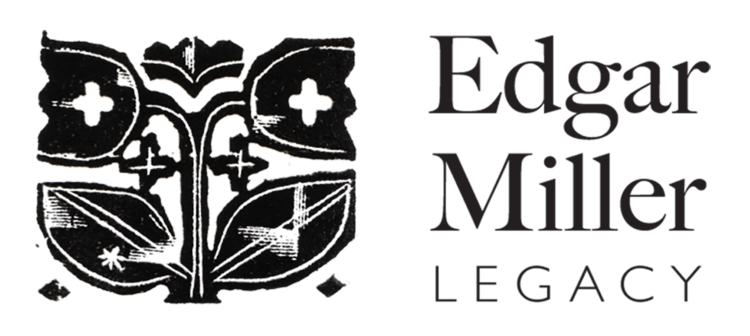Pabst Blue Ribbon
Hall
Milwaukee, Wisconsin
1943
Extensive fresco mural work
By 1943, Miller was a well-known commercial decorator and his reputation as a quick and witty muralist drew the attention of major companies, including Pabst Brewing. The Milwaukee-based beer company had its production campus—one of the largest in the world—located near the city’s downtown since 1844. By 1893, the company was the largest beer seller in the United States by volume (more than one million barrels being sold annually). One of the brand’s most enduring emblems was the silk blue ribbon tied around their “Blue Ribbon” line of Pabst Select beer bottles, a custom that began in the 1890s and endured through 1950 when beer cans became more popular.
In 1940, the company began to renovate and build out portions of its campus to better accommodate visiting clients and cater to an international audience. One of the newer buildings was the Pabst Blue Ribbon Hall. The hall was built to resemble a 17th century German beer hall, with a bar, offset sitting rooms, a second-floor gallery space, and a central room for both long tables and smaller high top pub tables.
Edgar was commissioned to paint murals for the new beer hall depicting both the history of the Pabst company and more broadly the entire evolution of the craft of brewing. Bringing his love of folk and medieval art, the project was a perfect fit for Miller. He undertook the work as a fresco painting, using simple colors of blue, red, and gray (the same colors as the Pabst brand logo). The simple color scheme was also advantageous to completing the many sections of fresco on rapidly drying plaster. Miller used used empty Pabst cans to mix and hold his paints. The illustrations throughout the mural are characteristically emotive and dynamic, with delightful hidden details and rich textures throughout.
The panoramic mural in the small tasting room off the main hall brought the visitor into the medieval process of brewing beer from seed to mug. Miller showed the entire brewing culture of planting and watering of the crops, harvesting of barley and hops, collecting and drying of the grains in the malting process, filling of the brew kettles by monkish brew masters, and finally the enjoyment of the beer by a baronial lord and his entourage at a long table.
Considered by many as the most beautiful bar in town, Pabst Blue Ribbon Hall, with its main event venue space in the adjoining garden and barroom known as Best Place is a major attraction for enthusiasts looking to visit the Historic Pabst Brewery. It is well worth a visit both for the art and for a beer when in Milwaukee.
Above: Edgar used old Pabst beer cans to hold his paint as he worked on his fresco murals.
Below: Figures of all kinds from the history of beer-making can be found throughout the murals at eye-level and overhead.













